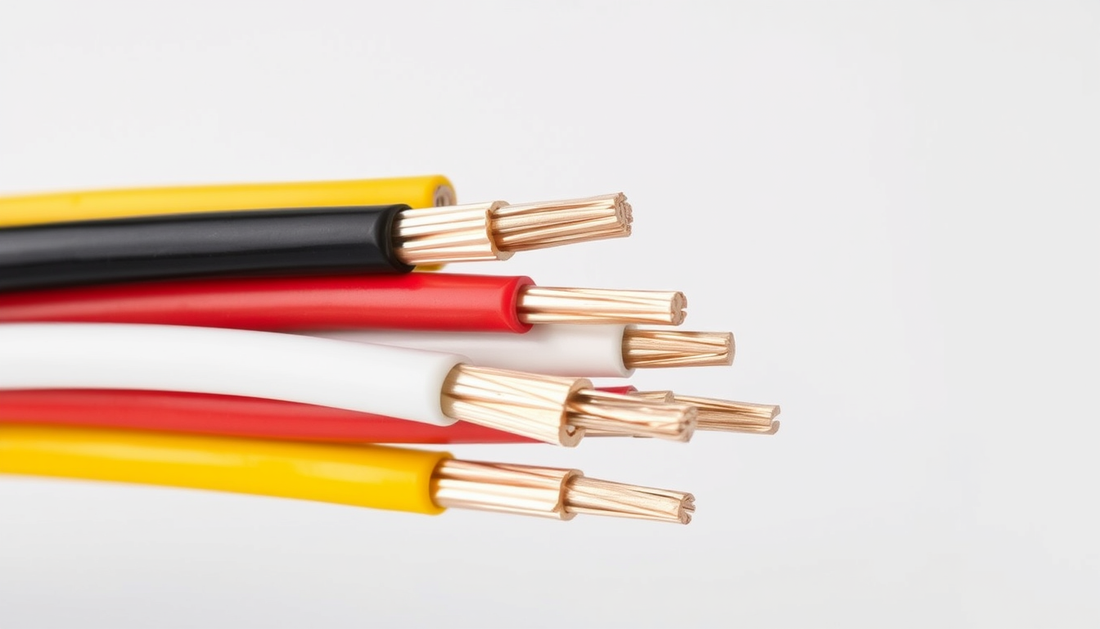
All You Need to Know About 12 Gauge Wire
Share
Introduction
When it comes to electrical wiring, understanding the different wire gauges is essential for ensuring safety, efficiency, and the success of your projects. One of the most commonly used wire gauges is 12 GA (gauge) wire. This blog will explore the characteristics, applications, and advantages of 12 GA wire, helping you make informed decisions for your electrical needs.
What is 12 GA Wire?
12 GA wire, also known as 12-gauge wire, refers to a wire with a diameter of approximately 2.05 mm (0.0808 inches). The gauge number inversely indicates the thickness of the wire—meaning the lower the number, the thicker the wire. A 12 GA wire is thinner than 10 GA but thicker than 14 GA, making it a versatile option for various applications.
Typically, 12 GA wire is made from copper or copper-clad aluminum (CCA). Copper is renowned for its excellent electrical conductivity and durability, making it a popular choice for many applications. On the other hand, CCA offers a cost-effective alternative while still providing sufficient conductivity for most uses. 12 GA wire is available in both solid and stranded forms, with stranded wire being more flexible and easier to route through tight spaces.

Common Applications of 12 GA Wire
12 GA wire is highly versatile and is used in a variety of electrical projects. Here are some of the most common applications:
Residential Wiring: In residential settings, 12 GA wire is commonly used for general-purpose circuits, including lighting fixtures and outlets. It is suitable for 20-amp circuits, which are standard in many homes for powering kitchen appliances, laundry rooms, and bathroom outlets. The wire's thickness allows it to handle the electrical load without significant risk of overheating.
Lighting Circuits: 12 GA wire is often used in wiring for both indoor and outdoor lighting circuits. Its ability to carry adequate current makes it ideal for connecting multiple light fixtures on the same circuit. Whether you're installing recessed lighting in your living room or outdoor landscape lighting, 12 GA wire offers the necessary capacity to ensure reliable performance.
Powering Small Appliances: Many small appliances, such as microwaves, toasters, and air fryers, require circuits that can handle up to 20 amps. 12 GA wire is perfectly suited for these applications, providing a safe and efficient way to power your kitchen gadgets without worrying about overloading the circuit.
Automotive Wiring: In automotive applications, 12 GA wire is often used for connecting accessories such as car stereos, alarms, and additional lighting. The wire's flexibility and current-carrying capacity make it an excellent choice for powering these components, ensuring that they function properly without significant voltage drop.
Solar Power Systems: In solar installations, 12 GA wire is used to connect solar panels to inverters and battery banks. Its moderate thickness allows it to carry the necessary current while minimizing energy loss, making it a reliable choice for small to medium-sized solar systems.
Low Voltage Applications: 12 GA wire is also commonly used in low-voltage applications, such as doorbell systems, thermostats, and landscape lighting. Its durability and adequate current capacity ensure that these systems operate smoothly and efficiently.

Why Choose 12 GA Wire?
Selecting the appropriate wire gauge is critical for the safety and functionality of your electrical systems. Here are some reasons why 12 GA wire is often the preferred choice:
Adequate Current Capacity: 12 GA wire can handle up to 20 amps of current, making it suitable for a wide range of household circuits. Its ability to carry sufficient current reduces the risk of overheating and potential electrical fires.
Versatility: The versatility of 12 GA wire allows it to be used in various applications, from residential wiring to automotive and solar power systems. This makes it a go-to choice for both professional electricians and DIY enthusiasts.
Flexibility: Stranded 12 GA wire is flexible and easy to work with, especially in projects where the wire needs to be routed through tight or curved spaces. This flexibility simplifies installation and reduces the risk of damage during the process.
Durability: Whether made from copper or CCA, 12 GA wire is robust and durable, capable of withstanding regular wear and tear. This makes it a reliable option for both indoor and outdoor installations.
Cost-Effective: While copper wire is generally more expensive, 12 GA CCA wire offers a more affordable alternative without compromising performance. This balance of cost and quality makes it a popular choice for many electrical projects.

Conclusion
12 GA wire is a versatile and essential component in many electrical systems, offering the right balance between current-carrying capacity, flexibility, and durability. Whether you're wiring a home, installing lighting, powering small appliances, or setting up a solar power system, 12 GA wire provides the reliability and performance you need to ensure your project's success. With options available in both solid and stranded forms, and made from copper or CCA, 12 GA wire is a valuable asset in any electrician's toolkit.








